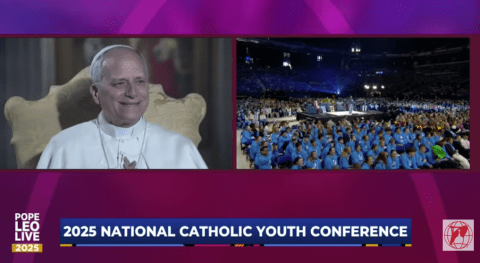Browsing News Entries
NYPD increasing presence at churches after incidents at Staten Island Catholic parishes
Posted on 01/16/2026 22:40 PM (EWTN News - US Catholic News)
 Staten Island, New York | Credit: John McAdorey/Shutterstock
Staten Island, New York | Credit: John McAdorey/Shutterstock
Jan 16, 2026 / 17:40 pm (CNA).
The New York Police Department (NYPD) says it will increase officer presence at local churches after several crimes committed at Catholic parishes on Staten Island.
Several Catholic churches on Staten Island have been vandalized or attacked in recent weeks, including a robbery and a violent incident during a morning Mass in which two police officers were injured.
State Sen. Jessica Scarcella-Spanton called for increased police presence at churches in the area after the incidents. At a Jan. 15 press conference, local leaders including NYPD Staten Island Borough Commander Melissa Eger said police presence would be heightened at churches across the borough.
Eger said at the press conference that none of the incidents indicated that the Catholic churches had been targeted due to religion, describing the crimes as “acts ... of opportunism and theft" as well as one incident involving a mentally ill person.
“That said, any incident, especially a disruption of service that occurs at any house of worship, generates serious concern from our community and we know that,” the commander said.
Scarcella-Spanton said at the press event that “nobody should feel unsafe where they are praying.”
Addressing the Catholic community, she said: “I just want you to know that we stand with you.”
“We’re going to be making sure that this issue is highlighted, because I think it’s important to bring light to the fact that this has happened now four times,” the state senator said.
Also at the press conference was Father Jacob Thumma, the pastor of both St. Ann’s Church and St. Sylvester’s Church, both of which were the site of recent criminal incidents.
Referring to the incident at St. Ann’s on Jan. 9 where a man violently disrupted morning Mass and injured two responding officers, Thumma said the altercation “highlights an urgent societal concern — the need for enhanced services and compassionate care for those suffering from mental illness.“
“We must continue to invest in mental health resources that support families [and] provide timely interventions before crises occur,” the priest said.
He further called on the public “to join us in prayer for the individual involved in this incident, that he may receive the healing he needs, [as well as for] for the injured police officers and their families.”
Dutch conservative activist and Catholic convert barred from entering the UK
Posted on 01/16/2026 22:10 PM (EWTN News - World Catholic News)
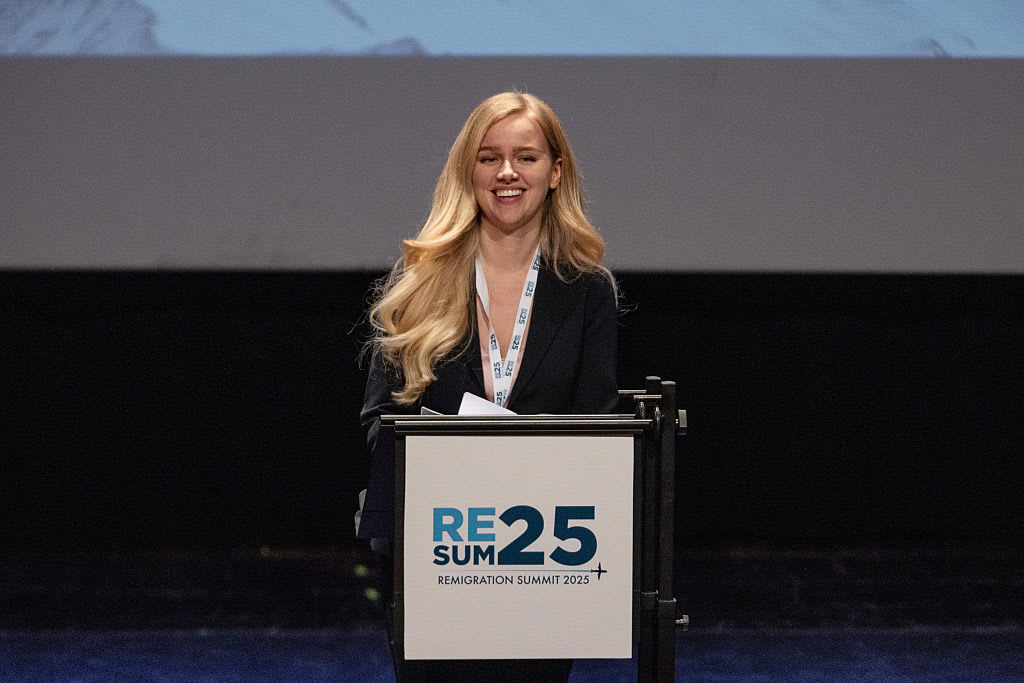 Dutch conservative political commentator and activist Eva Vlaardingerbroek delivers a speech during the first “Remigration Summit” at Teatro Condominio on May 17, 2025, in Gallarate, Italy. She was recently barred by the U.K. government from entering the U.K., deemed “not conducive to the public good.” | Credit: Emanuele Cremaschi/Getty Images)
Dutch conservative political commentator and activist Eva Vlaardingerbroek delivers a speech during the first “Remigration Summit” at Teatro Condominio on May 17, 2025, in Gallarate, Italy. She was recently barred by the U.K. government from entering the U.K., deemed “not conducive to the public good.” | Credit: Emanuele Cremaschi/Getty Images)
, Jan 16, 2026 / 17:10 pm (CNA).
Here is a roundup of Catholic world news from the past week that you might have missed.
Vice President Vance, House Speaker Johnson to speak at 2026 March for Life
Posted on 01/16/2026 21:40 PM (EWTN News - US Catholic News)
 U.S. Vice President JD Vance. | Credit: Gage Skidmore, CC BY-SA 4.0, via Wikimedia Commons
U.S. Vice President JD Vance. | Credit: Gage Skidmore, CC BY-SA 4.0, via Wikimedia Commons
Jan 16, 2026 / 16:40 pm (CNA).
Vice President JD Vance is scheduled to speak at the 2026 March for Life Rally in Washington, D.C., on Jan. 23.
Vance, who is the nation’s second Catholic vice president, will join Republican House Speaker Mike Johnson and Rep. Chris Smith, R-New Jersey, among other speakers at the 53rd annual pro-life event, organizers said.
“Vice President Vance is grateful to the tens of thousands of Americans who travel to the National Mall each year to speak out in support of life and looks forward to joining them for the second consecutive year,” a spokesperson for the vice president told EWTN News.
Vance will be attending and speaking at the event for the second time as vice president. He spoke at the March for Life in 2025 where he delivered his first public remarks in the leadership position.
Addressing the crowd at the 2025 march, Vance said becoming a father helped to solidify his convictions that “an unborn life is worthy of protection.”
“You remind us that the March for Life is not a single event that takes place on a frigid January day,” he said to the crowd. “The March for Life is the work of the pro-life movement every day from this point forward,” he said.
“We will be back next year,” he said.
While President Donald Trump will not be attending the 2026 March for Life in person, he told EWTN News’ White House correspondent Owen Jensen on Jan. 16 he will address the crowd through a “beautiful” prerecorded message.
“And they’re going to play it,” he said. “And those are great people. I want to tell you they’re great people,” Trump said about attendees.
While the president will deliver the virtual message, the Trump administration is receiving backlash from pro-life activists following his claim that Republicans need to be “ flexible” with the Hyde Amendment and the reinstatement of funds to Planned Parenthood.
When asked about the Hyde Amendment, Trump said “you’re going to hear about it” in the message.
Vance is set to deliver his remarks at the pre-march rally at 11 a.m. on Jan. 23. The March for Life is scheduled to begin after the rally.
Bishop Fernandes praises religious worker visa rule change, says work still to be done
Posted on 01/16/2026 19:35 PM (EWTN News - US Catholic News)
 Bishop Earl K. Fernandes of the Diocese of Columbus, Ohio. | Credit: Photo courtesy of the Archdiocese of Cincinnati.
Bishop Earl K. Fernandes of the Diocese of Columbus, Ohio. | Credit: Photo courtesy of the Archdiocese of Cincinnati.
Jan 16, 2026 / 14:35 pm (CNA).
Bishop Earl Fernandes of Columbus, Ohio, expressed gratitude that the Department of Homeland Security is easing visa restrictions for religious workers and called for passage of a bill to address visa backlogs.
“This rule change provides some much-needed relief!” Fernandes said in a statement released Jan. 15. “We take comfort in knowing that sacramental and pastoral care will not be disrupted in our parishes, schools, hospitals, and prison ministries.”
Under the rule, religious workers in the country on R-1 visas would no longer be required to reside outside of the U.S. for a full year if they reach their statutory five-year maximum period of stay before completing their green card applications.
Fernandes said 21 priests and 13 sisters who hold R-1 visas and work within the diocese would have been affected in the absence of the rule change.
“While R-1 religious workers are still required to depart the U.S., the rule establishes that there is no longer a minimum period of time they must reside and be physically present outside the U.S. before they seek readmission in R-1 status,” according to a DHS statement about the Jan. 16 publication of the rule in the Federal Register.
Legislative fix
Fernandes said: “I encourage all of the faithful to press for a permanent legislative fix and to support the Religious Workforce Protection Act.” The bill, sponsored by Sen. Tim Kaine, D-Virginia, would extend R-1 nonimmigrant visa status beyond the usual five-year limit and waive the one-year foreign residency requirement for those who left the U.S., allowing them to stay and serve their communities while waiting for green cards. Rep. Mike Carey, R-Ohio, introduced a House version of the bill.
Fernandes thanked Carey; Rep. Jim Jordan, R-Ohio; and Sen. Bernie Moreno, R-Ohio, for their efforts to support the legislation. Moreno, he said, “intervened personally to work for the rule change.”
“The impact of our international priests and religious across the United States is pivotal in helping us build a civilization of love, assisting in the growth of the virtues of solidarity and fraternity, and providing the sacramental and pastoral needs of our people, an increasingly diverse group from around the world,” Fernandes said. “I urge you to continue to push for the passage of the Religious Workforce Protection Act with your representatives and ask for your continued prayers for all clergy and religious throughout our diocese and around the world, while offering prayers of gratitude for our civic leaders and for our priests and religious who continue to serve the members of our community.”
Kaine introduced the measure in April 2025 with support from Sens. Susan Collins, R-Maine, and Jim Risch, R-Idaho. The bill would modify rules to allow religious workers to bypass a requirement to be strictly tied to their original job while waiting for green cards.
“Faith communities across America — including my own parish in Richmond — depend on foreign religious workers and suffer greatly when these dedicated members of their congregations are forced to leave the country due to no fault of their own,” Kaine said. “This interim final rule from DHS is a step in the right direction and will reduce hardships to temples, churches, mosques, and other religious communities throughout the U.S.”
“Now it’s time for Congress to take the next step and pass the Kaine-Collins-Risch Religious Workforce Protection Act to further streamline the bureaucratic process for foreign-born pastors, priests, rabbis, nuns, imams, and other religious workers to continue their work here in the United States,” he added.
“I joined Sens. Kaine and Risch in introducing the Religious Workforce Protection Act when I noticed Maine parishes where I attend Mass were losing their priests because their R-1 visas expired while their EB-4 applications were still pending. I saw this issue creating a real crisis in our state. We urged the previous administration to fix this issue, but the problem went unaddressed — until today,” Collins said. “We will continue working to pass our legislation to provide full and lasting relief to religious workers and the communities they serve in Maine and across the country.”
“Idaho’s religious communities and their beloved clergy are central to our right to worship. That’s why I proudly introduced the Religious Workforce Protection Act,” Risch said. “The Trump administration’s action aligns with our efforts to ensure Idaho’s religious workers can stay in the U.S. and continue serving their congregations while their visas are processed. I will continue working with Sens. Collins and Kaine to pass our legislation and ensure none of Idaho’s religious workers face the threat of leaving the communities they love and serve so faithfully.”
Christian symbols in public buildings on trial before European Court of Human Rights
Posted on 01/16/2026 19:05 PM (EWTN News - World Catholic News)
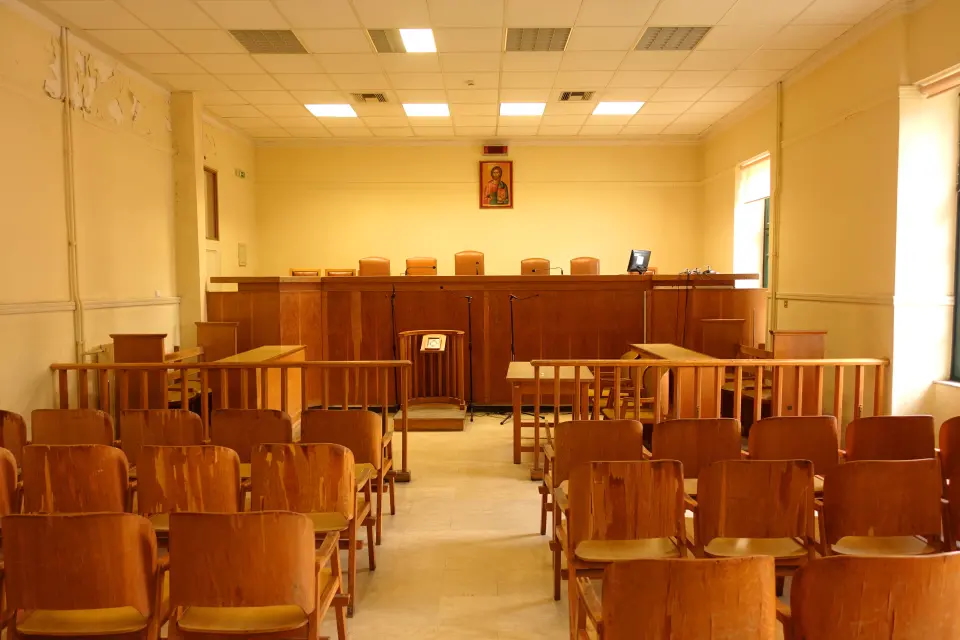 A case that seeks to remove Christian symbols, including icons and religious artwork, from public buildings in Greece began when two atheists asked for the removal of Christian icons displayed in Greek courtrooms. | Credit: Courtesy of ADF International
A case that seeks to remove Christian symbols, including icons and religious artwork, from public buildings in Greece began when two atheists asked for the removal of Christian icons displayed in Greek courtrooms. | Credit: Courtesy of ADF International
, Jan 16, 2026 / 14:05 pm (CNA).
ADF International goes to court to defend the right to display Christian symbols in Greece’s public buildings.
EWTN launches unified Catholic news brand: CNA and ACI Group become EWTN News
Posted on 01/16/2026 18:31 PM (EWTN News - US Catholic News)
 Credit: EWTN News
Credit: EWTN News
Jan 16, 2026 / 13:31 pm (CNA).
The Eternal Word Television Network (EWTN) has rolled out a major rebrand of its EWTN News services, bringing multiple outlets and coverage brands under “one global news organization” committed to coherently covering the Catholic Church both regionally and globally.
In a Jan. 15 press release, EWTN — which was launched as a Catholic television network in 1981 by Mother Angelica, PCPA — announced that it was bringing Catholic News Agency and its affiliated international outlets under “a single, unified identity.”
Catholic News Agency was originally founded in 2004 in Denver; it was acquired by EWTN in 2014. In addition, the regional, language-based outlets of the Association of Catholic Information (ACI) Group, also acquired by EWTN in 2014, are in the process of being fully integrated into the EWTN News brand.
The new, unified EWTN News brand is accompanied by a new digital platform, EWTNNews.com. Initially launched in English, reflecting the U.S. roots of EWTN’s global Catholic news operation, the platform will soon expand with a Spanish-language edition and will continue integrating coverage in five additional languages to serve audiences worldwide.
EWTN Chairman of the Board and CEO Michael Warsaw said the move “reflects both who we are and who we are called to be: one global news organization, rooted in the teachings of the Church and committed to serving the faithful with accuracy, integrity, and conviction.”
EWTN News President Montse Alvarado said the rebrand is “not simply about a new name or a new website — it reflects a deeper alignment of mission, editorial vision, and operations.”
“By uniting our global news teams under the EWTN News brand and launching a new platform, we are enhancing how we create and deliver content, embracing evolving forms of storytelling, and answering the Holy Father’s call to serve the truth with charity and courage,” Alvarado said.
Ken Oliver-Méndez, the editor-in-chief of the English service of EWTN News, said the media outlet “has been preparing for this moment for several years.”
“Fully integrating our work under EWTN News signals a mature, unified newsroom,” he said.
EWTNNews.com is now live, with traffic from catholicnewsagency.com being gradually redirected over the coming days. The transition will be completed by Jan. 24, the feast of St. Francis de Sales, patron saint of journalists.
The new EWTNNews.com includes features reflecting EWTN’s ongoing technological transformation. A redesigned Watch section showcases a digital-first approach to news production and storytelling. Updated design elements also underscore a growing commitment to the audience experience.
In addition, new devotional features, such as daily readings, further integrate news consumption with prayer and catechesis.
Headquartered in Washington, D.C., EWTN News is the global, multilingual news service of the EWTN Global Catholic Network. With language teams based in the United States, Peru, the Vatican, Kenya, Brazil, Germany, Italy, and Iraq, along with correspondents throughout the world, EWTN News delivers coverage in English, Spanish, French, Portuguese, Italian, German, and Arabic, serving Catholic audiences worldwide.
Among the digital and print platforms EWTN News operates are ChurchPOP and The National Catholic Register, a nearly 100-year-old biweekly newspaper with a robust digital presence. EWTN News also produces television news programs such as “EWTN News Nightly,” “EWTN Noticias,” “EWTN News In Depth,” “EWTN Pro-Life Weekly,” “The World Over with Raymond Arroyo,” and “Vaticano.”
Becket report finds increases in support for religious liberty in the public square
Posted on 01/16/2026 16:54 PM (EWTN News - US Catholic News)
 The Becket Fund releases its annual Religious Freedom Index (RFI) on Jan. 16, 2026, exploring American attitudes on the First Amendment. | Credit: Leigh Prather/Shutterstock
The Becket Fund releases its annual Religious Freedom Index (RFI) on Jan. 16, 2026, exploring American attitudes on the First Amendment. | Credit: Leigh Prather/Shutterstock
Jan 16, 2026 / 11:54 am (CNA).
Annual research by the Becket Fund for Religious Liberty found that Catholics in America today feel more accepted as people of faith in society than in past years.
The annual Religious Freedom Index (RFI) by the Becket Fund was released on Jan. 16 and explores American attitudes on the First Amendment, specifically religious freedom and tolerance.
An online poll surveyed 1,002 U.S. adults. The survey screened a sample that is representative by gender, age, ethnicity, race, and region matching U.S. Census figures, with a margin of error of plus or minus 3.1%, researchers said.
In 2024, about 54% of Catholics reported they felt accepted as people of faith, specifically 19% said they feel “completely” accepted and 35% said they felt “a good amount” accepted. Becket found that in 2025, these numbers increased, with 22% feeling “completely” accepted and 37% said “a good amount.”
“It’s heartening to see a growing number of Catholics report feeling fully accepted by their fellow Americans,” said Mark Rienzi, president and CEO of Becket. “Our nation is strongest when believers can participate in public life without fear of being bullied for their faith.”
Seal of confession
The report examined American attitudes about religious liberty and specific cases on religious freedom in the nation.
The percentage of Americans who believe the First Amendment right to the freedom to exercise religion should “definitely” or “somewhat” protect priests from breaking the seal of confession, even if someone confesses something indicating child abuse or neglect, is 61%. This was compared with 39% (20% somewhat not or 19% definitely not) who said the First Amendment does not protect the seal of confession in such instances.
The research noted that 77% of Americans reported they either “completely” or “mostly” accept school choice for religious schools.
In regard to specific U.S. Supreme Court cases regarding education, most Americans surveyed agreed with the rulings. The research found there was a four-point rise from 69% in 2024 to 73% in 2025 in those who support parents’ decision to opt their children out of content they believe is inappropriate.
When asked specifically about the case of Mahmoud v. Taylor, in which parents sued a Maryland public school district for not allowing them to opt their elementary-aged children out of LGBTQ-themed storybooks that conflicted with their religious beliefs, 62% of Americans said they support the Supreme Court’s decision.
The report found a five-point increase from 2020 to 2025 in Americans who agree that religious freedom is inherently public and that Americans should be free to share their faith in public spaces, such as at school, work, or on social media, with an increase from 52% to 55%.
The report found that the younger generations especially reported an increased “vision of religious liberty” in the public square. Gen Z scored the highest in areas including “religious sharing” and “religion in action.” Of the group, 60% accepted and supported the freedom to express or share religious beliefs with others, compared with 52% of all Americans.
French bishops condemn euthanasia bill ahead of Senate debate
Posted on 01/16/2026 16:00 PM (EWTN News - World Catholic News)
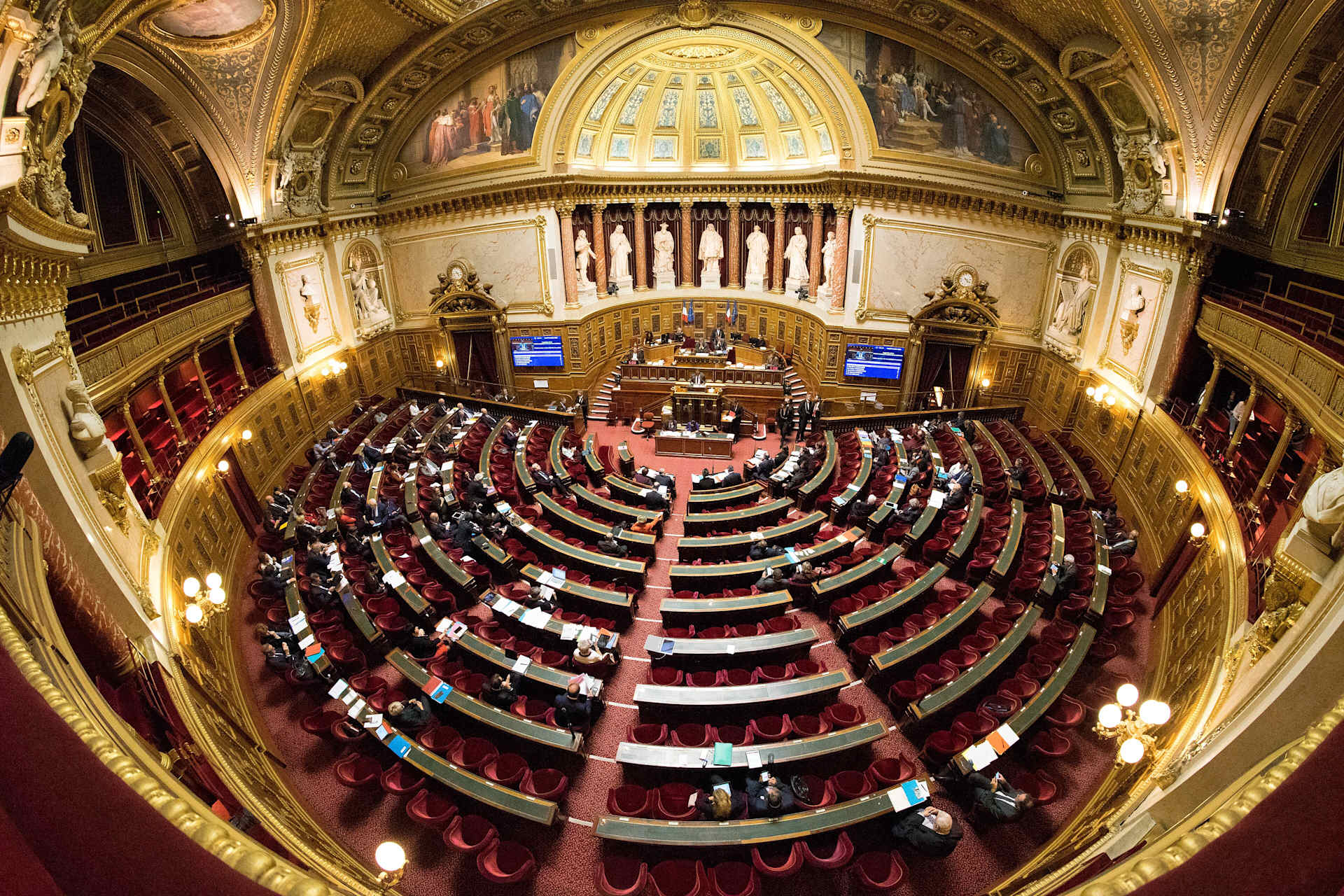 The French Senate, the upper house of the French Parliament. | Credit: Jacques Paquier (CC BY 2.0)
The French Senate, the upper house of the French Parliament. | Credit: Jacques Paquier (CC BY 2.0)
, Jan 16, 2026 / 11:00 am (CNA).
The bill criminalizes “obstructing aid-in-dying” — mirroring abortion penalties — with up to two years in prison and a 30,000-euro ($35,000) fine for anyone who dissuades patients from euthanasia.
Italian diocese to award $58K to international ‘economy of fraternity’ prize winners
Posted on 01/16/2026 14:26 PM (EWTN News - World Catholic News)
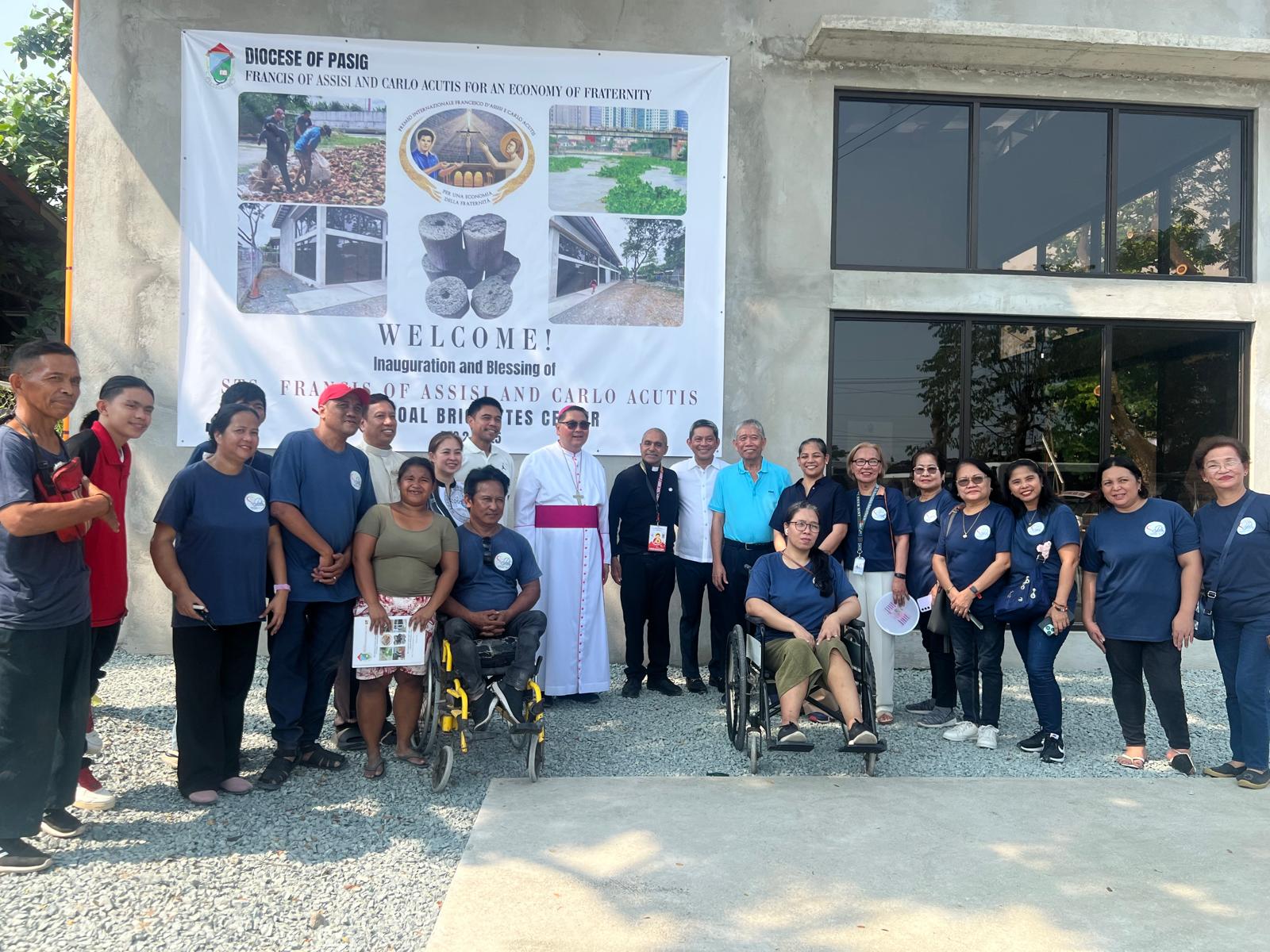 Monsignor Anthony J. Figueiredo and Bishop Mylo Vergara of Pasig, Philippines, bless the facility of the 2022 “Economy of Fraternity” prize recipient, the Ecocharcoal Briquettes Project in the Diocese of Pasig, on Dec. 3, 2025. | Courtesy of Monsignor Anthony J. Figueiredo
Monsignor Anthony J. Figueiredo and Bishop Mylo Vergara of Pasig, Philippines, bless the facility of the 2022 “Economy of Fraternity” prize recipient, the Ecocharcoal Briquettes Project in the Diocese of Pasig, on Dec. 3, 2025. | Courtesy of Monsignor Anthony J. Figueiredo
, Jan 16, 2026 / 09:26 am (CNA).
The former archbishop of Assisi, Domenico Sorrentino, instituted the award in 2020 on the day of St. Carlo Acutis’ Oct. 10 beatification.
Papal puzzle lovers: Popes Leo XIV and XIII noted for liking word games
Posted on 01/16/2026 09:30 AM (USCCB News Releases)
VATICAN CITY (CNS) -- Pope Leo XIV, who plays the daily online puzzle Wordle, is not the only papal puzzle lover.
His predecessor and namesake, Pope Leo XIII, was also passionate about wordplay, anonymously publishing riddles in Latin.
Going by the pseudonym "X," the Italian-born Pope Leo used to craft poetic puzzles for a Roman periodical at the turn of the 19th century.
The modern-day Pope Leo from Chicago, however, is a fan of the New York Times' popular online word game in which players get six chances to guess a five-letter word.
During a live link-up with thousands of young people taking part in the National Catholic Youth Conference in Indianapolis and millions more online Nov. 21, Pope Leo was asked about and shared his gaming strategy.
"I use a different word for Wordle every day. So there is no set starting word in case you're wondering," he said, laughing. His older brother, John Prevost, has said the two of them also play the multiplayer game, Words with Friends, online regularly and compare scores.
So while Pope Leo XIV likes to play word games, his 19th-century predecessor liked to create them.
Pope Leo XIII, who died in 1903, created lengthy riddles, known as "charades," in Latin in which readers had to guess a rebus-like answer from two or more words that together formed the syllables of a new word.
Eight of his puzzles were published anonymously in "Vox Urbis," a Rome newspaper that was printed entirely in Latin between 1898 and 1913. The Vatican newspaper, L'Osservatore Romano, published an article about this historical detail in 2014.
According to the article, any "Vox Urbis" reader who submitted the correct answer to the riddle received a book of Latin poetry written by either Pope Leo or another noted Catholic figure.
The identity of the mysterious riddle-maker, however, was eventually revealed by a French reporter covering the Vatican for the daily newspaper Le Figaro.
Felix Ziegler published his scoop Jan. 9, 1899, a year after the puzzles started appearing, revealing that "Mr. X" was, in fact, the reigning pope, the Vatican newspaper said.
In the pope's hometown, Carpineto Romano, which is about 35 miles southeast of Rome, students at the middle school named for him published 26 of the pope's Latin puzzles in a book titled, "Aenigmata: The Charades of Pope Leo XIII." It includes puzzles that teachers and pupils found, but which had never been published before.
One example of the pope's Latin riddles talked of a "little boat nimbly dancing," which sprang a leak as it "welcomed the shore so near advancing."
"The whole your eyes have known, your pallid cheeks have shown; for oh! the swelling tide no bravest heart could hide, when your dear mother died," continues the translation of part of the riddle-poem.
The answer, "lacrima," ("teardrop") merges clues elsewhere in the poem for "lac" ("milk") and "rima" ("leak" or "fissure").
Pope Leo XIII, who headed the universal church from 1878 to 1903, was a trained Vatican diplomat and a man of culture.
He was even a member of an exclusive society of learning founded in Rome in 1690 called the Academy of Arcadia, whose purpose was to "wage war on the bad taste" engulfing baroque Italy. Pope Leo, whose club name was "Neandro Ecateo," was the last pope to be a member of the circle of poets, artists, musicians and highly cultured aristocrats and religious.
The pope was also passionate about hunting and viniculture. Unable to leave the confines of the Vatican after Italy was unified and the papal states brought to an end in 1870, he pursued his hobbies in the Vatican Gardens.
He had a wooden blind set up to hide in while trapping birds, which he then would set free immediately.
He also had his own small vineyard, which, according to one historical account, he tended himself, hoeing out the weeds, and visiting often for moments of prayer and writing poetry.
Apparently, one day, gunfire was heard from the pope's vineyard, triggering fears of a papal assassination attempt.
Instead, it turned out the pope had ordered a papal guard to send a salvo of bullets into the air to scare off the sparrows who were threatening his grape harvest.
Pope Leo XIII has the fourth-longest pontificate in history -- at 25 years -- after being nudged out of third place by St. John Paul II, who was pope for more than 26 years. St. Peter is considered the longest-reigning pontiff at 34 years.
Pope Leo XIII wrote 86 encyclicals, including the church's groundbreaking "Rerum Novarum," which ushered in the era of Catholic social teaching.
Known for his openness to historical sciences, Pope Leo ordered in 1881 that the Vatican Secret Archives be open to researchers, and he formally established the Vatican Observatory in 1891 as a visible sign of the church's centuries-old support for science.

